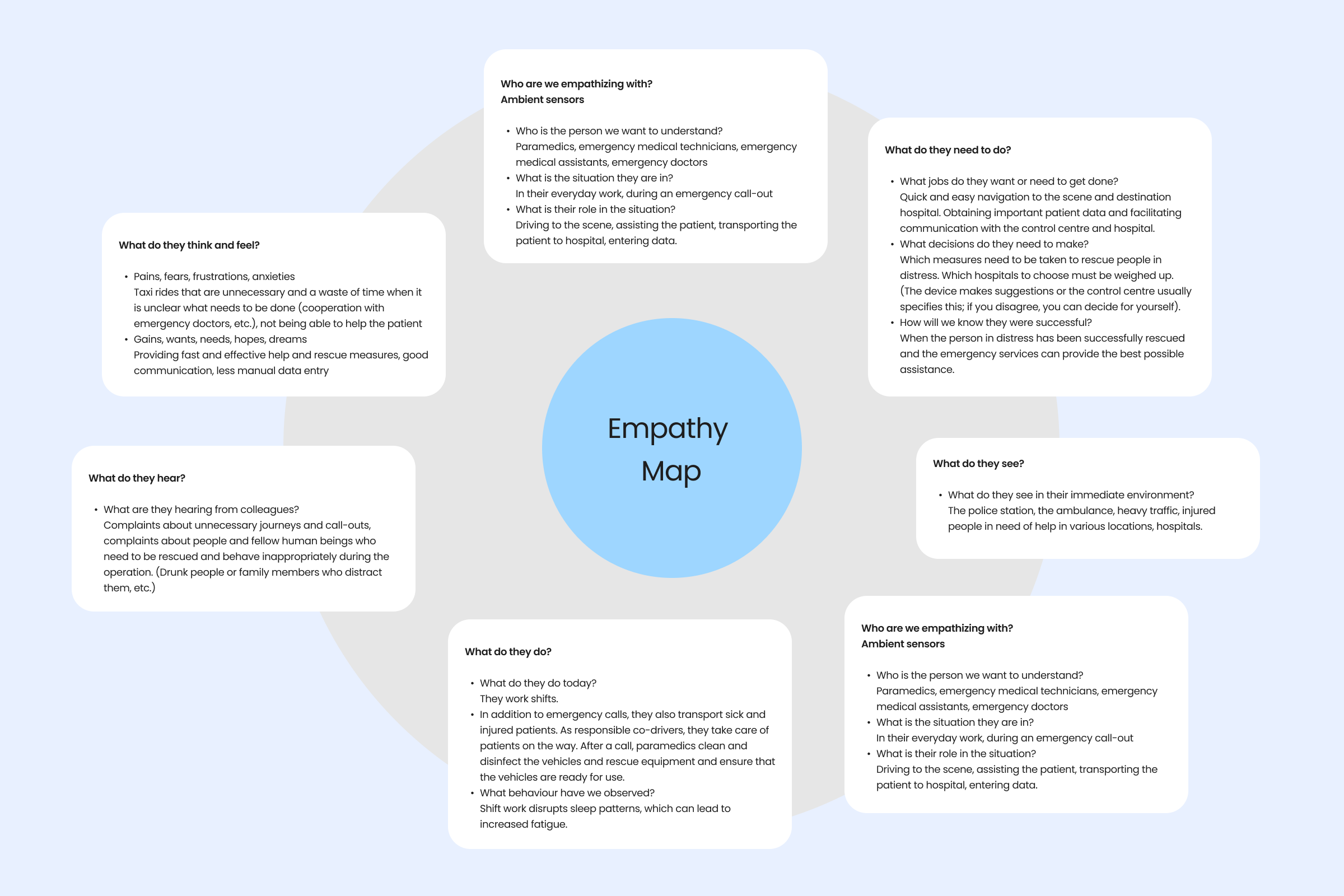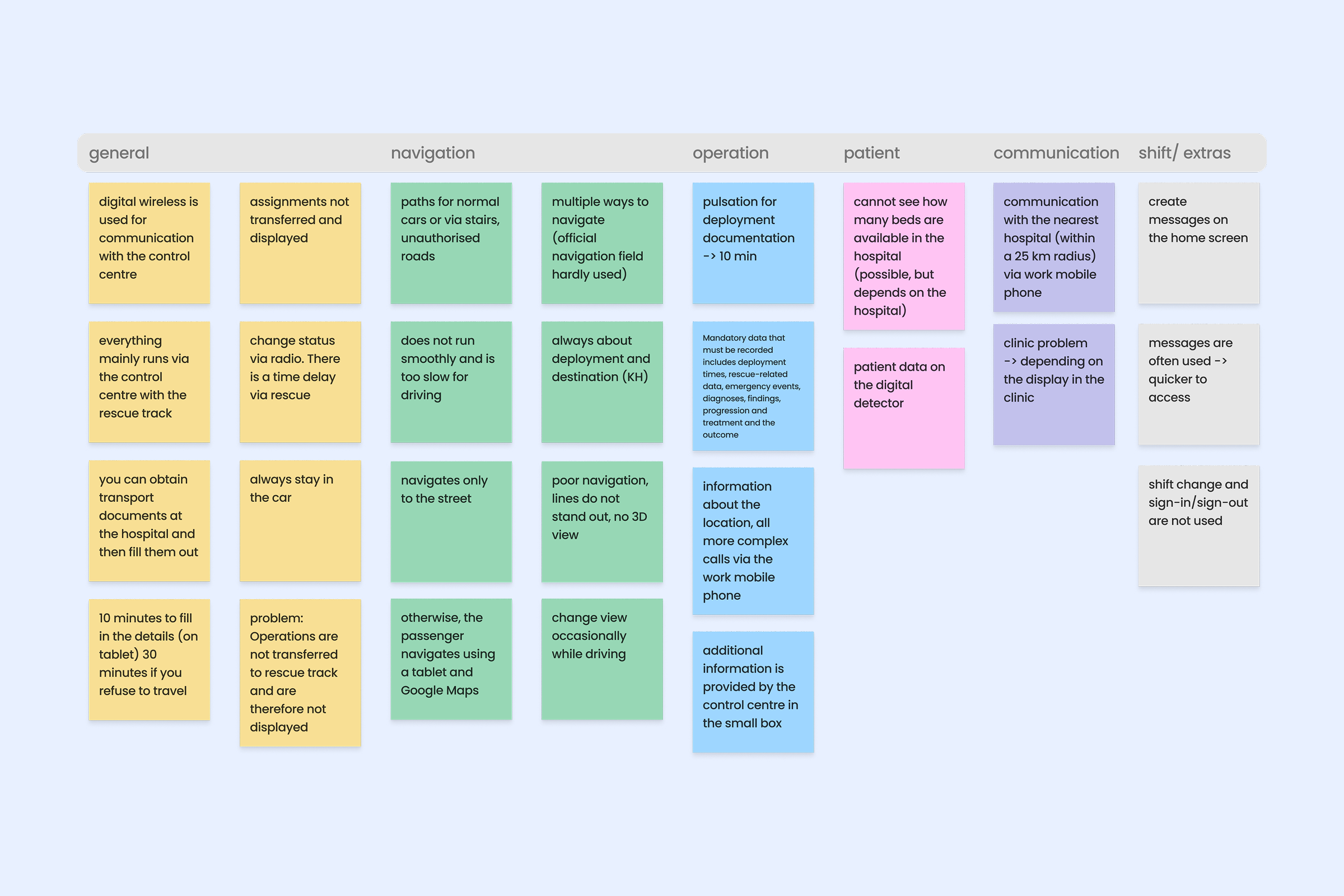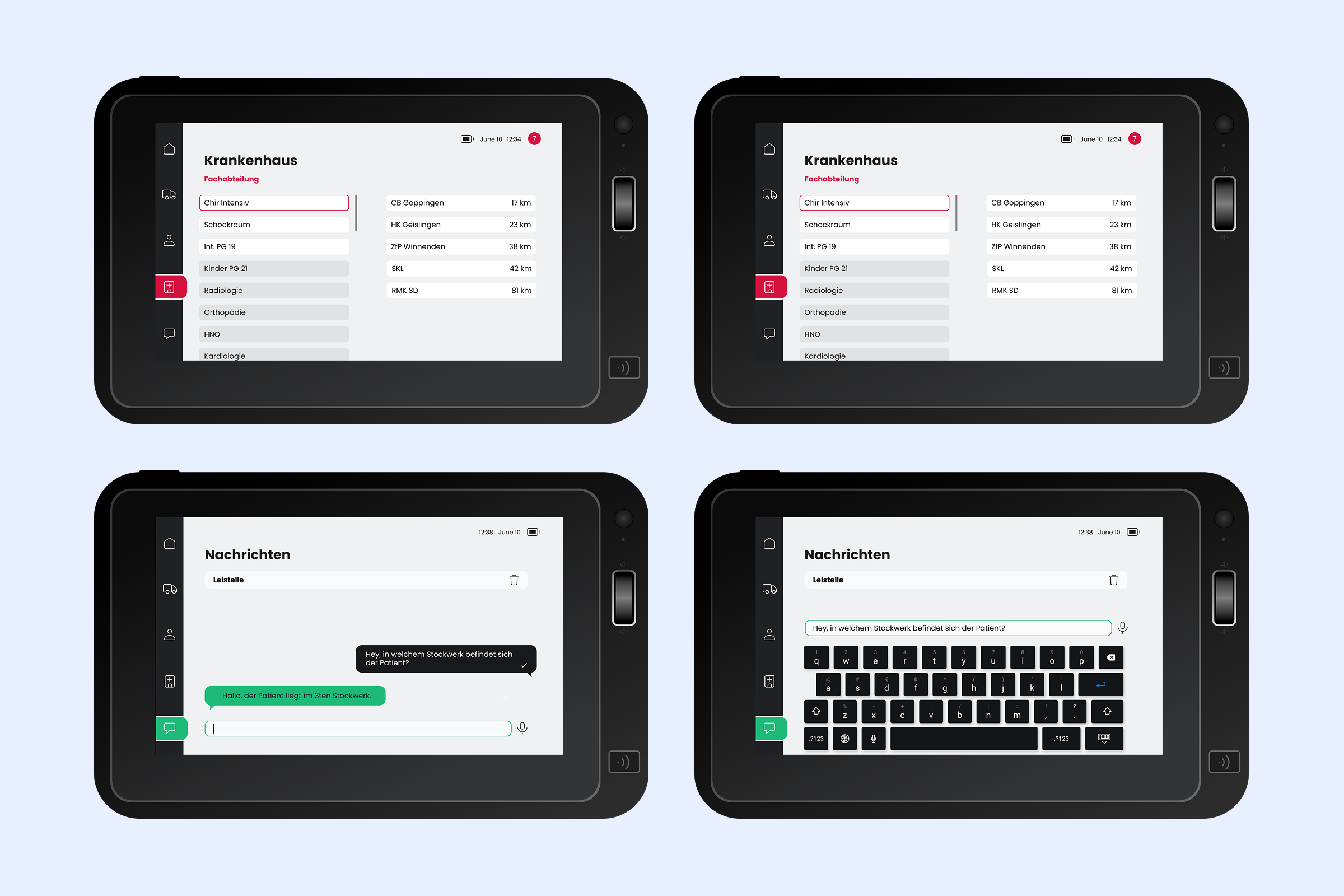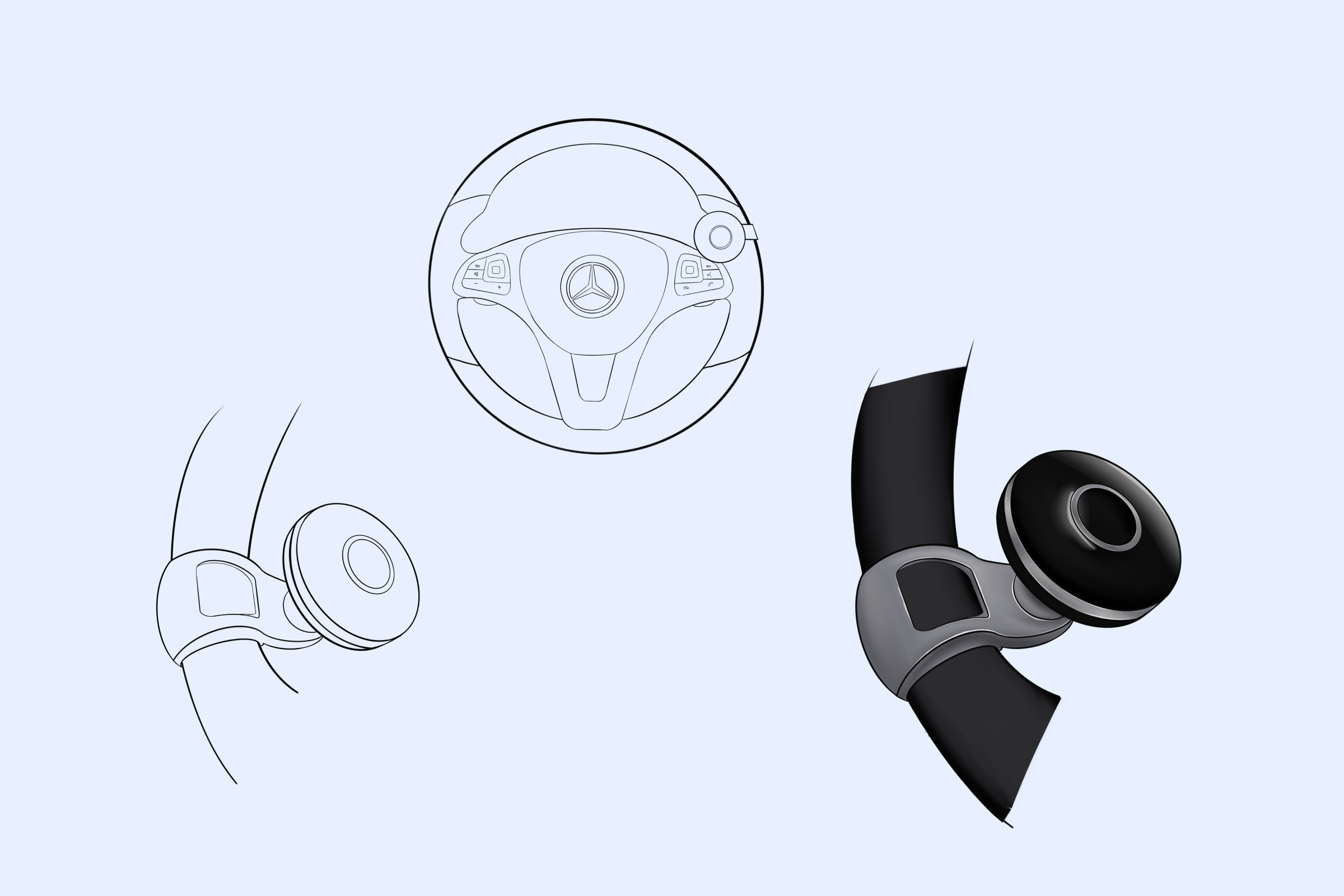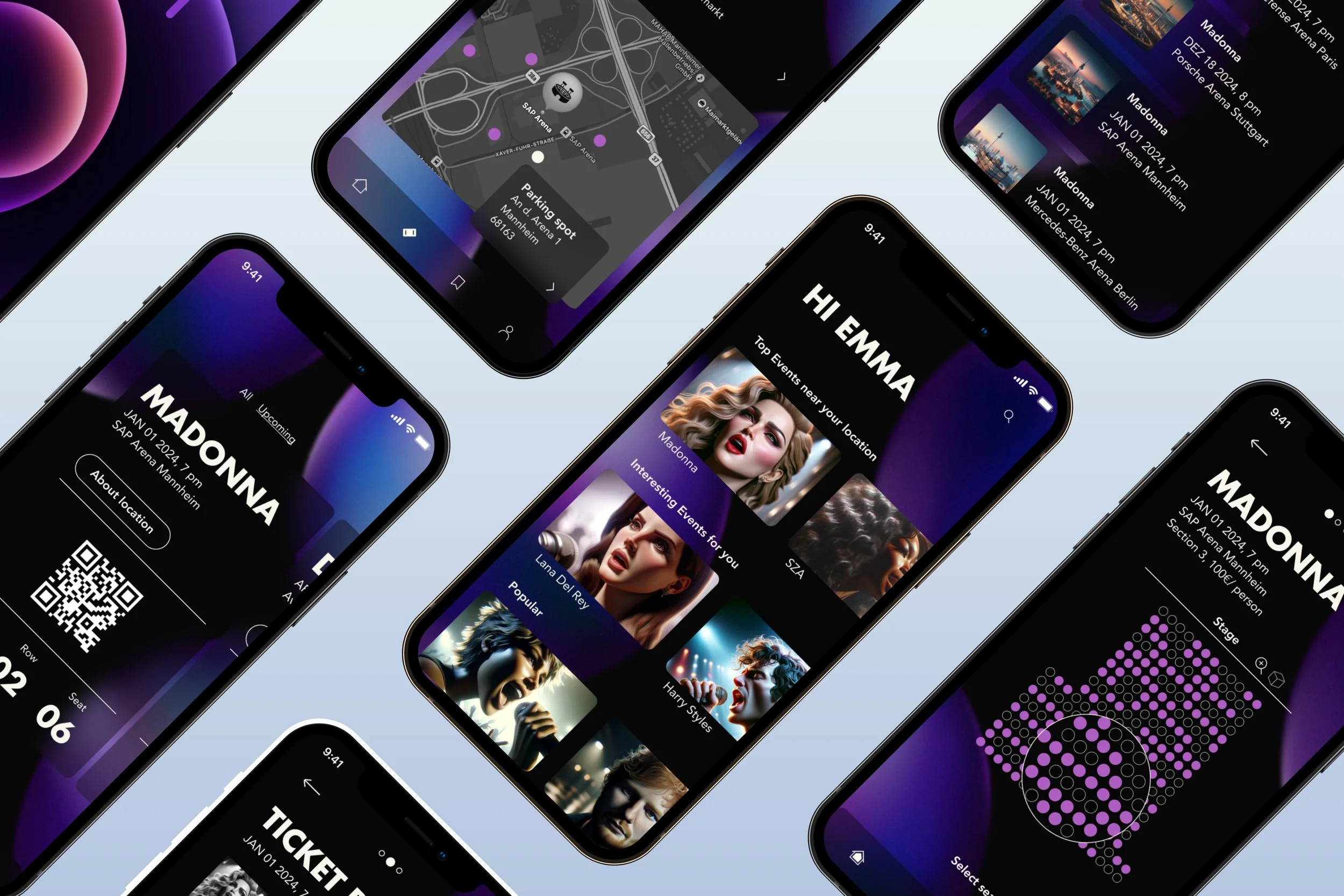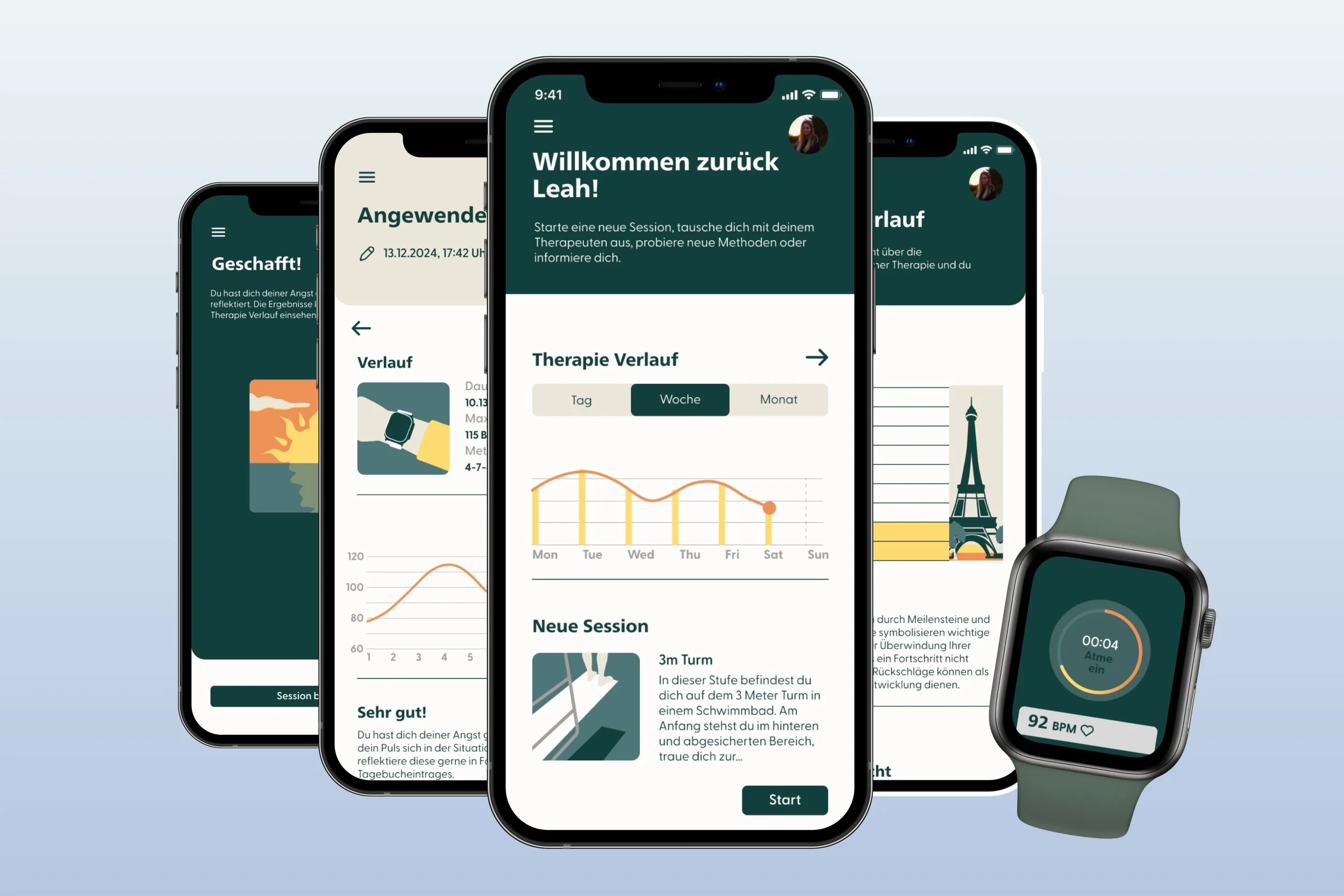RESCUE TRACK
Reimagination of digital operations management for emergency services.
team
Emily Kühl
my role
research
concept
ux/ui design
prototyping
course
interface design by
Carmen Hartmann-Menzel
year
2024
timing
5 months
problem
Rescuetrack is a digital operations management system for emergency services that connects software and in-vehicle hardware. It supports dispatch centers and rescue teams in planning, navigation, documentation, and communication throughout an emergency mission. The system provides navigation to the incident site, gives medical teams access to essential patient information during transport, and enables direct communication with both the dispatch center and the destination hospital. While rescuetrack aims to streamline the workflow from emergency call to patient handover through real-time data transmission and status updates, in practice, users often face challenges. As one paramedic describes: “We are sometimes sent to the wrong address, the card reader often doesn’t work as it should, and we wish we had more information about the mission.”
topic elaboration
To gain a deeper understanding of the challenges surrounding rescuetrack and its role in emergency operations, we conducted a topic elaboration exercise. This method helped us systematically explore the broader context of our project by addressing key questions such as: Why is the topic relevant? What problems need to be solved? How do current processes work, and what conceptual approaches could improve them? Through this structured reflection, we were able to identify weaknesses in existing systems such as unreliable navigation, limited access to operational data and technical malfunctions reported by paramedics and link them to opportunities for innovation. This analysis formed the basis for our further research and concept development and led us to a more user-centric and efficient solution for emergency workflows.
research
empathy map
In order to develop a deeper understanding of the everyday realities of emergency service workers, we created an empathy map focusing on paramedics, EMTs, and emergency doctors during their operations. This step allowed us to empathize with their experiences and uncover not only what they do, but also what they think, feel, and struggle with. We found that their main frustrations revolve around unreliable navigation systems, unclear communication with control centres and the large number of unnecessary patient transport missions that make them feel undervalued. They also face physical and mental strain from shift work and stressful rescue situations. At the same time, they are highly motivated by the desire to provide effective help, communicate clearly, and minimize administrative effort.
online survey
In the next phase of our research, we conducted an online survey with 40 participants, of whom 85% are currently working in emergency services and 15% have previous professional experience in the field. The goal was to identify the main challenges and pain points paramedics and emergency responders face during their shifts particularly in relation to the further development and improvement of the rescuetrack system.
The survey revealed a clear need for more intuitive and reliable navigation, with routes tailored to ambulance requirements and real-time updates on traffic, roadworks, and closures. Participants emphasized the importance of a visually clear interface and more detailed information transfer from the dispatch center. Additional suggestions included automatic saving of patient data, clearer access route indications, and a portable or integrated version of the device combining navigation and card reader functions. Overall, the findings underline the demand for a user-centered and efficient system that better supports rescue teams in high-pressure situations.
in-person interviews
Afterwards, we conducted three in-person interviews with paramedics and emergency medical technicians to gain deeper insights into the challenges identified in the online survey. These conversations allowed us to explore specific pain points in more detail and better understand the practical realities of their daily work. The collected insights were then categorized into six key themes: general, navigation, operations, patient, communication and shift/ extras.
user flow
Moving on, we created a user flow to map the interactions between all key players involved in an emergency response. These included the hospital, the control centre, the ambulance driver, the ambulance co-driver, the Rescuetrack system, the radio and the card reader. The purpose of the user flow was to visualise the sequence of actions and information exchange, identify potential bottlenecks or inefficiencies, and better understand how each component and actor contributes to the overall process.
crazy 8 method
In the concept development phase, we generated a variety of user-centered ideas using the crazy 8 method, focusing on improving navigation, documentation and communication within the rescuetrack system. Key proposals included physical controls such as rotary dials and haptic buttons for easier menu navigation, preventing errors when selecting status modes, and allowing the driver to stay focused on the road. Ideas also targeted dual displays and devices, with a secondary tablet for the co-driver handling patient documentation, and small steering-wheel controls for quick access to main functions. Navigation improvements included using standard map services optimized for both ambulances and regular vehicles, linking routes directly to missions, destinations, and stations, and integrating the card reader into the device. Communication enhancements involved simplified status updates via the dial and mission-relevant messaging over digital radio. Finally, features like automatic patient data transfer to the display without touch input were suggested to streamline workflow and reduce manual effort, creating a more efficient and intuitive experience for emergency personnel.
concept
auditive feedback
To reduce the need for paramedics to constantly look at the rescuetrack display during high-pressure situations, we designed a physical rotary dial that can be attached to the steering wheel, allowing users to navigate menus with their thumb without taking their eyes off the road. This interaction is complemented by auditory feedback, providing real-time cues for each action. For example, sounds indicate when the rescuetrack is switched on or off, navigation starts or ends, a category is selected, a message is received or sent, or patient data is read successfully from the card reader. By integrating this audio guidance, the system enhances safety, focus, and efficiency, ensuring paramedics can operate the device intuitively while maintaining full attention on driving and patient care.
final wireframes
After creating low-fidelity wireframes to structure the content, we moved on to the final screen design for the rescuetrack. We focused on a clear and highly legible layout, ensuring that all information is quickly understandable under stress. Different navigation categories were visually distinguished with distinct colors, making it easy for users to identify and switch between sections at a glance.
result
Through this project, we gained valuable insights into the complex workflows, pain points, and real needs of emergency service personnel. We learned that while digital systems like Rescuetrack have great potential to streamline operations, challenges such as unclear communication, navigation difficulties, and cognitive overload under stress can limit their effectiveness. Our research emphasized the importance of user-centered design, intuitive interfaces, and context-aware features that reduce errors and support decision-making in high-pressure environments.
learning
vision
Looking ahead, we find it particularly exciting to explore the rotary dial on the steering wheel for navigating the rescuetrack screens through user testing, as it could significantly improve usability and safety. Unfortunately, due to time constraints, we were not able to test this interaction in practice, but we see it as a promising direction for further development and evaluation in real-world scenarios.
